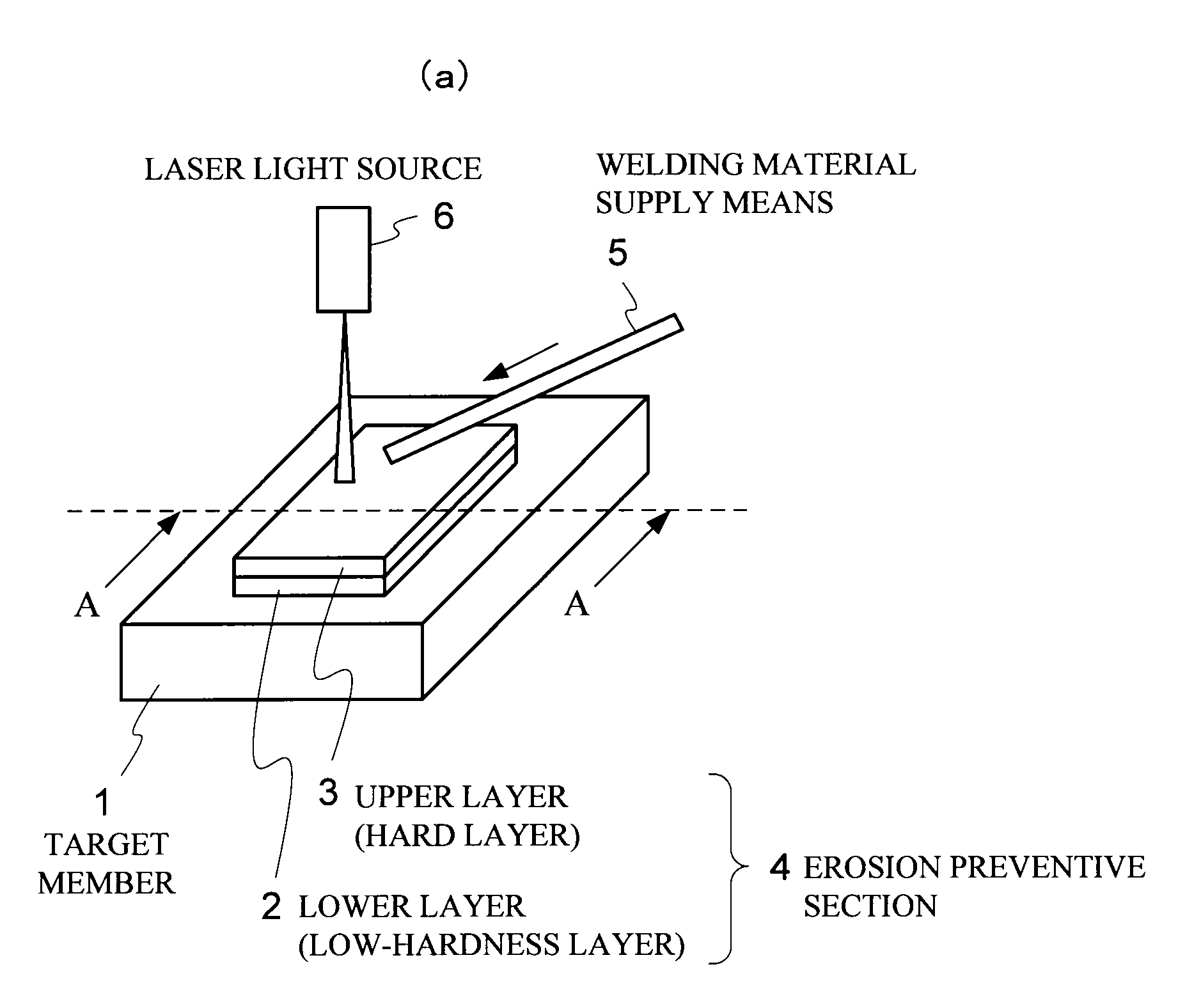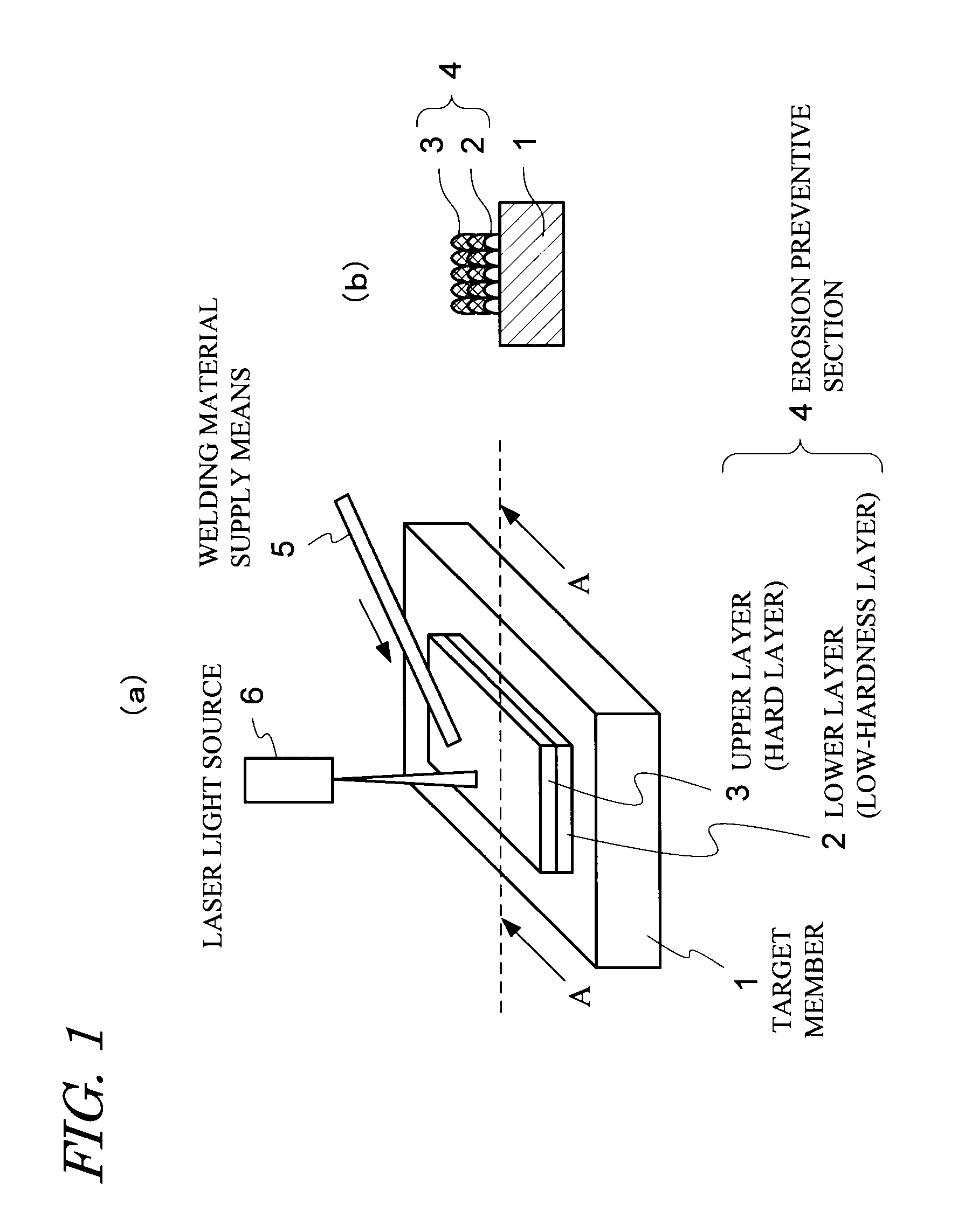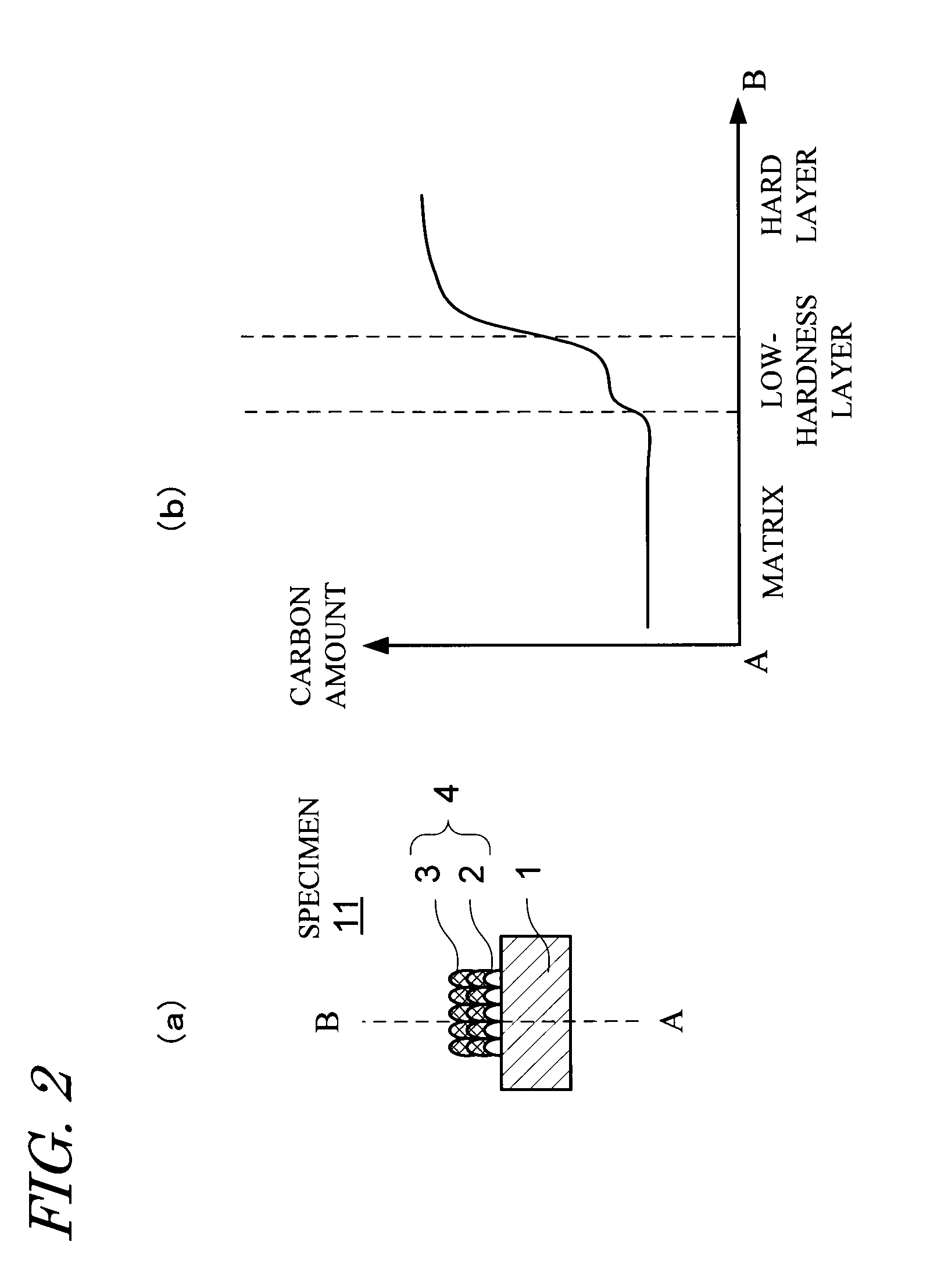Erosion prevention method and member with erosion preventive section
a technology of erosion prevention and turbine blades, applied in the direction of turbines, soldering devices, manufacturing tools, etc., can solve the problems of rear-stage turbine blades being eroded, the erosive environment is harsher, and the erosion of turbine blades is also problemati
- Summary
- Abstract
- Description
- Claims
- Application Information
AI Technical Summary
Benefits of technology
Problems solved by technology
Method used
Image
Examples
first embodiment
Configuration
[0040]FIG. 1(a) is an image diagram illustrating an erosion prevention method according to a first embodiment of the present invention. FIG. 1(b) is a schematic cross-sectional diagram of FIG. 1(a) viewed in the direction of arrow A.
[0041]As illustrated in FIG. 1, an erosion preventive section 4, comprising a lower layer (low-hardness layer) 2 of an austenitic material, and an upper layer (hard layer) 3 of a hard material, such as stellite, harder than the low-hardness layer 2, is formed by laser build-up welding on an erosion prevention target portion of a target member 1, such as a turbine rotor blade, that is used in an erosive environment, i.e. a portion susceptible to erosion caused by liquid droplets and solid particles in a use environment. Specifically, laser build-up welding is carried out through irradiation of a laser beam from a laser light source 6 while a welding material supply means 5 supplies an austenitic material and a hard material in the form of, fo...
second embodiment
Configuration
[0060]FIG. 6 illustrates an example of an erosion prevention method according to a second embodiment of the present invention. FIG. 6(a) is a perspective-view diagram illustrating a turbine rotor blade 41; FIG. 6(b) is an enlarged diagram illustrating the tip of the turbine rotor blade 41 illustrated in FIG. 6(a); and FIG. 6(c) is a perspective-view diagram illustrating a state in which an erosion preventive section 43 replaces a target portion 42 (portion enclosed by a broken line) at the tip of the turbine rotor blade 41.
[0061]As illustrated in FIG. 6, the erosion prevention method of the present embodiment is an erosion prevention method in which the target member is a turbine rotor blade 41 being used in an erosive environment. The leading edge portion of the turbine rotor blade 41 is the target portion 42 that requires erosion countermeasures. The erosion preventive section 43 is provided through laser-fusion of a hard material powder that is then build-up welded, ...
PUM
| Property | Measurement | Unit |
|---|---|---|
| thickness | aaaaa | aaaaa |
| thickness | aaaaa | aaaaa |
| thickness | aaaaa | aaaaa |
Abstract
Description
Claims
Application Information
 Login to View More
Login to View More - R&D
- Intellectual Property
- Life Sciences
- Materials
- Tech Scout
- Unparalleled Data Quality
- Higher Quality Content
- 60% Fewer Hallucinations
Browse by: Latest US Patents, China's latest patents, Technical Efficacy Thesaurus, Application Domain, Technology Topic, Popular Technical Reports.
© 2025 PatSnap. All rights reserved.Legal|Privacy policy|Modern Slavery Act Transparency Statement|Sitemap|About US| Contact US: help@patsnap.com



